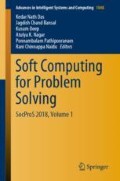Abstract
This paper presents the potential of derived shape features in the classification of the brain hemorrhage. Derived shape features are secondary features which are calculated from commonly used popular primary shape features. These features contain more relevant information having higher dependency on the shape of the target hemorrhage. Selection of high potential features is done to reduce the dimension of the input feature set to optimize classifier accuracy. The potential of these derived features is demonstrated and discussed with respect to the primary features.
Access this chapter
Tax calculation will be finalised at checkout
Purchases are for personal use only
References
Saatman, K.E., Duhaime, A.-C., Bullock, R., Maas, A.I., Valadka, A., Manley, G.T.: Classification of traumatic brain injury for targeted therapies. J. Neurotrauma 25(7), 719–738 (2008)
Liao, C.C., Xiao, F., Wong, J.M., Chiang, I.J.: A knowledge discovery approach to diagnosing intracranial hematomas on brain CT: recognition, measurement and classification. In: International Conference on Medical Biometrics, pp. 73–82. Springer (2008)
Shahangian, B., Pourghassem, H.: Automatic brain hemorrhage segmentation and classification algorithm based on weighted grayscale histogram feature in a hierarchical classification structure. Biocybern. Biomed. Eng. 36(1), 217–232 (2016)
Gong, T., Liu, R., Tan, C.L., Farzad, N., Lee, C.K., Pang, B.C., Tian, Q., Tang, S., Zhang, Z.: Classification of CT brain images of head trauma. In: IAPR International Workshop on Pattern Recognition in Bioinformatics, pp. 401–408. Springer (2007)
Lee, T.H., Fauzi, M.F.A., Komiya, R.: Segmentation of CT brain images using K-means and EM clustering. In: Fifth International Conference on Computer Graphics, Imaging and Visualisation, 2008. CGIV’08. IEEE, pp. 339–344 (2008)
Maduskar, P., Acharyya, M.: Automatic identification of intracranial hemorrhage in non-contrast CT with large slice thickness for trauma cases. In: SPIE Medical Imaging, International Society for Optics and Photonics, pp. 726011–726018 (2009)
Hsu, C.-W., Lin, C.-J.: A comparison of methods for multiclass support vector machines. IEEE Trans. Neural Netw. 13(2), 415–425 (2002)
Srivastava, D.K., Sharma, B., Singh, A.: Classification of hematomas in brain CT images using support vector machine. In: Information and Communication Technology for Sustainable Development, pp. 375–385. Springer (2018)
Chowdhury, D.R., Chatterjee, M., Samanta, R.: An artificial neural network model for neonatal disease diagnosis. Int. J. Artif. Intell. Expert. Syst. (IJAE) 2(3), 96–106 (2011)
Ramteke, R., Monali, Y.K.: Automatic medical image classification and abnormality detection using K-Nearest neighbour. Int. J. Adv. Comput. Res. 2(4), 190–196 (2012)
Ray, S., Kumar, V.: Binary Image Features Proposed to Empower Computer Vision (2018). arXiv preprint arXiv:180808275
Author information
Authors and Affiliations
Corresponding author
Editor information
Editors and Affiliations
Rights and permissions
Copyright information
© 2020 Springer Nature Singapore Pte Ltd.
About this paper
Cite this paper
Ray, S., Kumar, V. (2020). Derived Shape Features for Brain Hemorrhage Classification. In: Das, K., Bansal, J., Deep, K., Nagar, A., Pathipooranam, P., Naidu, R. (eds) Soft Computing for Problem Solving. Advances in Intelligent Systems and Computing, vol 1048. Springer, Singapore. https://doi.org/10.1007/978-981-15-0035-0_34
Download citation
DOI: https://doi.org/10.1007/978-981-15-0035-0_34
Published:
Publisher Name: Springer, Singapore
Print ISBN: 978-981-15-0034-3
Online ISBN: 978-981-15-0035-0
eBook Packages: Intelligent Technologies and RoboticsIntelligent Technologies and Robotics (R0)

